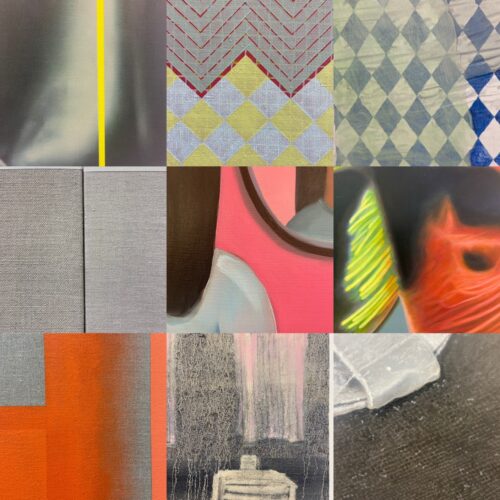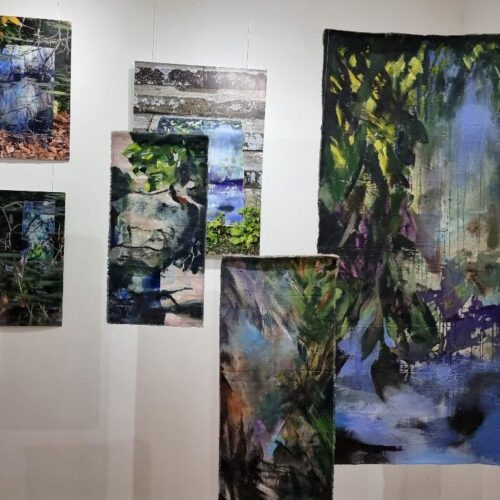
OCA Visit to 'Back to A Land and Song for Coal'
One of the great things about going on an OCA study visit is the opportunity to learn from people working in a similar medium to the works on exhibit. This happened on our recent visit to the Yorkshire Sculpture Park when the only sculptor in the group began to speculate as to whether Henry Moore had filled and repaired a late work in elm or whether it had been done afterwards by its owner. Suddenly the discussion – which had ranged from Nietzsche’s theory of Apollonian and Dionysian art, the reasons why vertical as opposed to horizontal sculpture might have more information on the ‘front’ rather than the ‘back’ and the influence of Bernini on Moore’s late figures – took on a more practical character. We all began to look a bit more closely at the work in front of us and to think less about what we knew or thought we knew about the artist.
Not that we could not have done with a bit more information from the curators. They took the title of the show from Jacquetta Hawke’s book of that name, which Moore knew well. Hence their idea was probably to refer to the cultural as well as visual effect of landscape on the sculptor’s work. The former is well-known in terms of Moore’s allusions to hills and horizons in the contours of his sculpture. Thankfully, there was a small plaque on the upper lawn with a quote from Moore about the inspiration of the Adel rocks near Leeds on his Reclining Figure of 1959. There was also a fascinating observation by him about how ‘separating the space of a composition could (relate) figures to the landscape…so that knees and breasts (became) mountains.’ Unfortunately, however, such explanatory labels were in short supply and it was only gradually that we made the connection between his wonderful series of lithographs of Stonehenge and the sense of cultural and national identity to which Jacquetta Hawkes alludes. Famously, when Moore finally acquired space to show his sculptures outside at Perry Green he was thrilled to find how the bony atavistic figures reminded him of Stonehenge. Pointing out such analogies might not have gone amiss.
An even more interesting comparison was the analogy between Moore’s experience of drawing miners underground as a war artist in 1942 and the more famous drawings of people sheltering from the blitz, which he had worked on two years earlier. His comments about finding a sense of the mysterious and unknown in caves and holes evokes this physical response and suggests comparisons to other subterranean imagery in the work of Graham Sutherland. In this period Moore’s claustrophobic exploration of the narrow spaces between large forms is apparent not just in his sculpture but in the Stonehenge lithographs with their thin columns of light between dark masses.
Ironically, the Yorkshire Sculpture Park’s other show, which is housed in its recently restored chapel, picks up on some of these themes. Song for Coal was commissioned by YSP and Opera North and brings together the musician, Ian Rawlinson, and the visual artist, Nick Crowe, who together have created the piece to commemorate the thirtieth anniversary of miners’ strike. The words are taken from a nineteenth century text in which the writer explains the chemical and functional properties of coal in the form of a catechism or questions and answers. Ian Rawlinson added a plainsong call and response to the text and Nick Crowe, who teaches at Goldsmith’s and whose work was also recently commissioned by the Whitworth Art Gallery, created flickering images of burning coal in the form of a medieval rose window. The collaboration is a brilliant marriage of two art forms which evokes cultural and landscape references in a way that would have been a joy to Jacquetta Hawkes. Once again, however, it might have been helpful to have drawn such parallels out.









